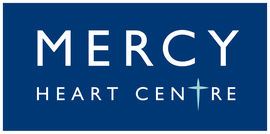Central Lakes, Dunedin - South Otago, Southland, Waitaki > Private Hospitals & Specialists > Mercy Healthcare >
Mercy Heart Centre (MHC) - Interventional Cardiology
Private Surgical Service, Cardiology
Description
Mercy Hospital is a not-for-profit surgical hospital committed to delivering 'exceptional care that makes a difference.' Mercy Heart Centre was established in July 2004 to provide specialist cardiac and vascular care to residents of Otago and Southland.
Our consultant cardiologists specialise in the diagnosis and treatment of coronary artery disease using angiograms and angioplasty. Our specialists work closely with highly skilled nurses and radiographers to deliver your care.
Mercy Heart Centre is an Affiliated Provider of Southern Cross Healthcare which means cost certainty and much less paperwork for Southern Cross members. All other New Zealand health insurers cover procedures performed in the centre, although individual arrangements with each insurance company are required.
These procedures are provided at our facility by the following medical specialists. For further information please seek a referral through your GP or contact your preferred specialist directly.
Consultants
-

Dr Sean Coffey
Cardiologist
-

Dr John Edmond
Interventional Cardiologist
-
Dr Peter McLeod
Cardiologist
-

Dr Anouska Moynagh
Interventional Cardiologist
-

Dr Benjamin Wilkins
Interventional Cardiologist
-

Professor Gerard Wilkins
Interventional Cardiologist
-

Professor Michael Williams
Interventional Cardiologist
Procedures / Treatments
A cardiologist in a sterile operating theatre environment performs this test. You will be asked not to eat or drink after midnight the evening before the procedure. You are not given a general anesthetic but may have some medication to relax you if needed. Local anesthetic is injected into an area of skin to the side of your groin or in your arm. A needle and then tube are fed into an artery here and advanced though the blood vessels to the heart. You can’t feel this. Dye is then injected so that the heart and blood vessels can be seen on X-ray. X-rays and measurements are then taken giving the doctors information about the state of your heart and the exact nature of any narrowed blood vessels. This allows them to plan the best form of treatment to prevent heart attacks and control any symptoms you may have. After the procedure you will have to lay flat for several hours to prevent bleeding.
A cardiologist in a sterile operating theatre environment performs this test. You will be asked not to eat or drink after midnight the evening before the procedure. You are not given a general anesthetic but may have some medication to relax you if needed. Local anesthetic is injected into an area of skin to the side of your groin or in your arm. A needle and then tube are fed into an artery here and advanced though the blood vessels to the heart. You can’t feel this. Dye is then injected so that the heart and blood vessels can be seen on X-ray. X-rays and measurements are then taken giving the doctors information about the state of your heart and the exact nature of any narrowed blood vessels. This allows them to plan the best form of treatment to prevent heart attacks and control any symptoms you may have. After the procedure you will have to lay flat for several hours to prevent bleeding.
A cardiologist in a sterile operating theatre environment performs this test.
You will be asked not to eat or drink after midnight the evening before the procedure.
You are not given a general anesthetic but may have some medication to relax you if needed. Local anesthetic is injected into an area of skin to the side of your groin or in your arm. A needle and then tube are fed into an artery here and advanced though the blood vessels to the heart. You can’t feel this. Dye is then injected so that the heart and blood vessels can be seen on X-ray. X-rays and measurements are then taken giving the doctors information about the state of your heart and the exact nature of any narrowed blood vessels. This allows them to plan the best form of treatment to prevent heart attacks and control any symptoms you may have.
After the procedure you will have to lay flat for several hours to prevent bleeding.
Percutaneous coronary intervention (PCI), or angioplasty, is a procedure designed to reduce or remove blockages in the coronary arteries (arteries supplying the heart with oxygen). The purpose of a PCI is to restore blood flow to the coronary arteries and ensure the heart is adequately supplied with oxygen, this may reduce or eliminate angina. This can restore blood flow in the event of a heart attack. You will be asked not to eat or drink after midnight the evening before the procedure. You are not given a general anesthetic but may have some medication to relax you if needed. Local anesthetic is put into an area of skin to the side of your groin. A needle and then tube are fed into an artery here and advanced though the blood vessels to the heart. You can’t feel this. Dye is then injected so that the heart and blood vessels can be seen on X-ray. X-rays and measurements are then taken giving the doctors information about the state of your heart and the exact nature of any narrowed blood vessels. After the catheter is in the artery with a blockage one of the following options may be considered. Balloon angioplasty. During this procedure, a specially designed catheter with a small balloon tip is guided to the point of narrowing in the artery. Once in place, the balloon is inflated to open the artery and stretch the artery to increase blood flow to the heart. Stent. A stent is a small stainless steel mesh tube that behaves like scaffolding and gives your coronary artery support. A balloon catheter is used to insert the stent into the narrowed coronary artery. Once in place, the balloon is inflated, and the stent on top of the balloon expands to the size of the artery and holds it open. The balloon is then deflated and removed, and the stent stays in place permanently.
Percutaneous coronary intervention (PCI), or angioplasty, is a procedure designed to reduce or remove blockages in the coronary arteries (arteries supplying the heart with oxygen). The purpose of a PCI is to restore blood flow to the coronary arteries and ensure the heart is adequately supplied with oxygen, this may reduce or eliminate angina. This can restore blood flow in the event of a heart attack. You will be asked not to eat or drink after midnight the evening before the procedure. You are not given a general anesthetic but may have some medication to relax you if needed. Local anesthetic is put into an area of skin to the side of your groin. A needle and then tube are fed into an artery here and advanced though the blood vessels to the heart. You can’t feel this. Dye is then injected so that the heart and blood vessels can be seen on X-ray. X-rays and measurements are then taken giving the doctors information about the state of your heart and the exact nature of any narrowed blood vessels. After the catheter is in the artery with a blockage one of the following options may be considered. Balloon angioplasty. During this procedure, a specially designed catheter with a small balloon tip is guided to the point of narrowing in the artery. Once in place, the balloon is inflated to open the artery and stretch the artery to increase blood flow to the heart. Stent. A stent is a small stainless steel mesh tube that behaves like scaffolding and gives your coronary artery support. A balloon catheter is used to insert the stent into the narrowed coronary artery. Once in place, the balloon is inflated, and the stent on top of the balloon expands to the size of the artery and holds it open. The balloon is then deflated and removed, and the stent stays in place permanently.
Percutaneous coronary intervention (PCI), or angioplasty, is a procedure designed to reduce or remove blockages in the coronary arteries (arteries supplying the heart with oxygen). The purpose of a PCI is to restore blood flow to the coronary arteries and ensure the heart is adequately supplied with oxygen, this may reduce or eliminate angina. This can restore blood flow in the event of a heart attack.
You will be asked not to eat or drink after midnight the evening before the procedure.
You are not given a general anesthetic but may have some medication to relax you if needed. Local anesthetic is put into an area of skin to the side of your groin. A needle and then tube are fed into an artery here and advanced though the blood vessels to the heart. You can’t feel this. Dye is then injected so that the heart and blood vessels can be seen on X-ray. X-rays and measurements are then taken giving the doctors information about the state of your heart and the exact nature of any narrowed blood vessels.
After the catheter is in the artery with a blockage one of the following options may be considered.
Balloon angioplasty. During this procedure, a specially designed catheter with a small balloon tip is guided to the point of narrowing in the artery. Once in place, the balloon is inflated to open the artery and stretch the artery to increase blood flow to the heart.
Stent. A stent is a small stainless steel mesh tube that behaves like scaffolding and gives your coronary artery support. A balloon catheter is used to insert the stent into the narrowed coronary artery. Once in place, the balloon is inflated, and the stent on top of the balloon expands to the size of the artery and holds it open. The balloon is then deflated and removed, and the stent stays in place permanently.
A specially trained technician performs this test. It is a test that uses high frequency sound waves to generate pictures of your heart. During the test, you generally lie on your back and gel is applied to your skin to increase the conductivity of the ultrasound waves. The technician then moves the small, plastic transducer over your chest. The test is painless and can take from 10 minutes to an hour. The machine then analyses the information and develops images of your heart. These images are seen on a monitor. This is referred to as an echocardiogram. Echocardiography can help in the diagnosis of many heart problems including cardiovascular disease, previous heart attacks, valve disorders, weakened heart muscle, and holes between heart chambers. If doctors are looking for evidence of coronary artery disease they may perform variations of this test which include Exercise echocardiography. This technique is used to view how your heart works under stress. It compares how your heart works when stressed by exercise versus when it is at rest. The ultrasound is conducted before you exercise and immediately after you stop. Either a stationary bicycle or standard treadmill is used. Dobutamine stress echocardiography. If you're unable to exercise for the previous test, you might be given medication to simulate the effects of exercise. During this test, an echocardiogram is performed when you're at rest. Then medication dobutamine is then given to you via a needle into a vein in your arm. Its effect is to make your heart work harder and faster just like with exercise. After it has taken effect, the echocardiogram is repeated and compared. The effects wears off very quickly.
A specially trained technician performs this test. It is a test that uses high frequency sound waves to generate pictures of your heart. During the test, you generally lie on your back and gel is applied to your skin to increase the conductivity of the ultrasound waves. The technician then moves the small, plastic transducer over your chest. The test is painless and can take from 10 minutes to an hour. The machine then analyses the information and develops images of your heart. These images are seen on a monitor. This is referred to as an echocardiogram. Echocardiography can help in the diagnosis of many heart problems including cardiovascular disease, previous heart attacks, valve disorders, weakened heart muscle, and holes between heart chambers. If doctors are looking for evidence of coronary artery disease they may perform variations of this test which include Exercise echocardiography. This technique is used to view how your heart works under stress. It compares how your heart works when stressed by exercise versus when it is at rest. The ultrasound is conducted before you exercise and immediately after you stop. Either a stationary bicycle or standard treadmill is used. Dobutamine stress echocardiography. If you're unable to exercise for the previous test, you might be given medication to simulate the effects of exercise. During this test, an echocardiogram is performed when you're at rest. Then medication dobutamine is then given to you via a needle into a vein in your arm. Its effect is to make your heart work harder and faster just like with exercise. After it has taken effect, the echocardiogram is repeated and compared. The effects wears off very quickly.
A specially trained technician performs this test. It is a test that uses high frequency sound waves to generate pictures of your heart. During the test, you generally lie on your back and gel is applied to your skin to increase the conductivity of the ultrasound waves. The technician then moves the small, plastic transducer over your chest. The test is painless and can take from 10 minutes to an hour.
The machine then analyses the information and develops images of your heart. These images are seen on a monitor. This is referred to as an echocardiogram.
Echocardiography can help in the diagnosis of many heart problems including cardiovascular disease, previous heart attacks, valve disorders, weakened heart muscle, and holes between heart chambers.
If doctors are looking for evidence of coronary artery disease they may perform variations of this test which include
Exercise echocardiography. This technique is used to view how your heart works under stress. It compares how your heart works when stressed by exercise versus when it is at rest. The ultrasound is conducted before you exercise and immediately after you stop. Either a stationary bicycle or standard treadmill is used.
Dobutamine stress echocardiography. If you're unable to exercise for the previous test, you might be given medication to simulate the effects of exercise. During this test, an echocardiogram is performed when you're at rest. Then medication dobutamine is then given to you via a needle into a vein in your arm. Its effect is to make your heart work harder and faster just like with exercise. After it has taken effect, the echocardiogram is repeated and compared. The effects wears off very quickly.
A stent is a tube-shaped device placed in the coronary arteries, to keep the arteries open in the treatment of coronary heart disease
A stent is a tube-shaped device placed in the coronary arteries, to keep the arteries open in the treatment of coronary heart disease
A stent is a tube-shaped device placed in the coronary arteries, to keep the arteries open in the treatment of coronary heart disease
application of an electric shock in order to restore normal heartbeat
application of an electric shock in order to restore normal heartbeat
application of an electric shock in order to restore normal heartbeat
Website
Contact Details
Mercy Heart Centre, 72 Newington Avenue, Māori Hill, Dunedin
Dunedin - South Otago
Website
Mercy Heart Centre
72 Newington Avenue
Maori Hill
Dunedin
OTA 9010
Street Address
Mercy Heart Centre
72 Newington Avenue
Māori Hill
Dunedin
OTA 9010
Was this page helpful?
This page was last updated at 9:47AM on December 17, 2025. This information is reviewed and edited by Mercy Heart Centre (MHC) - Interventional Cardiology.

